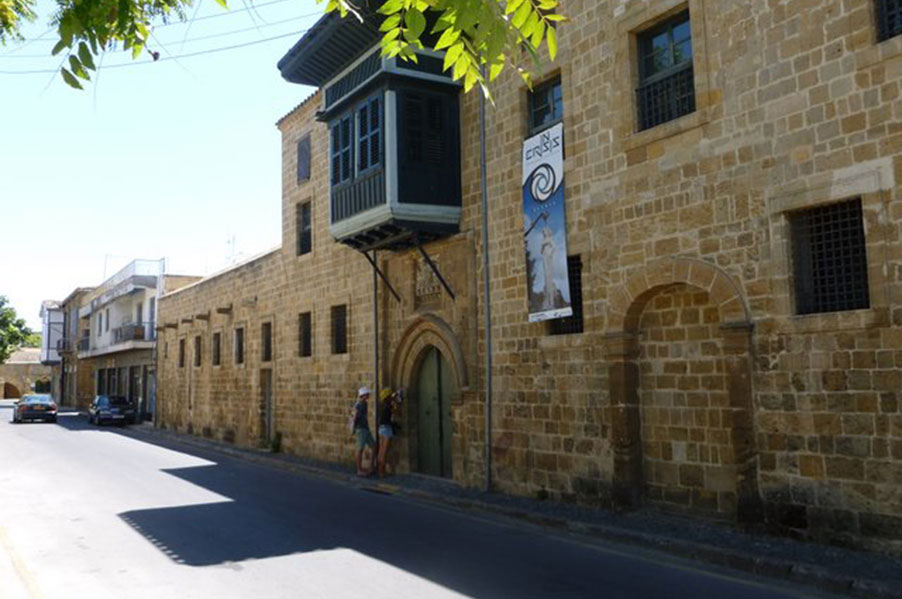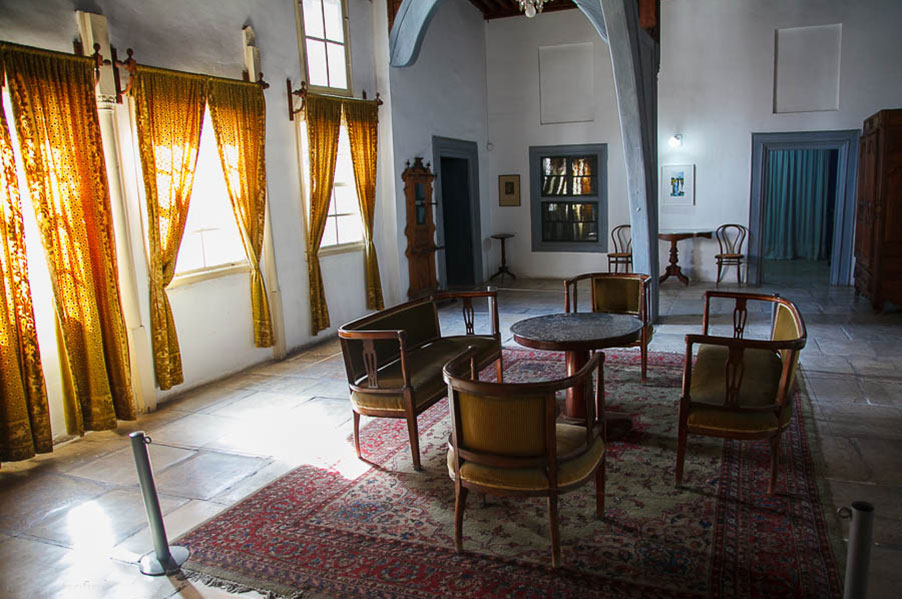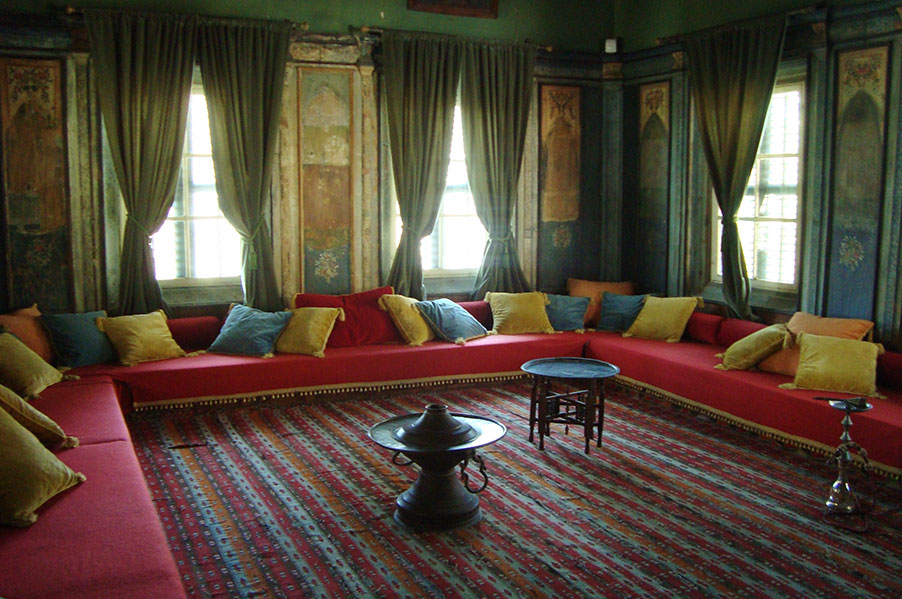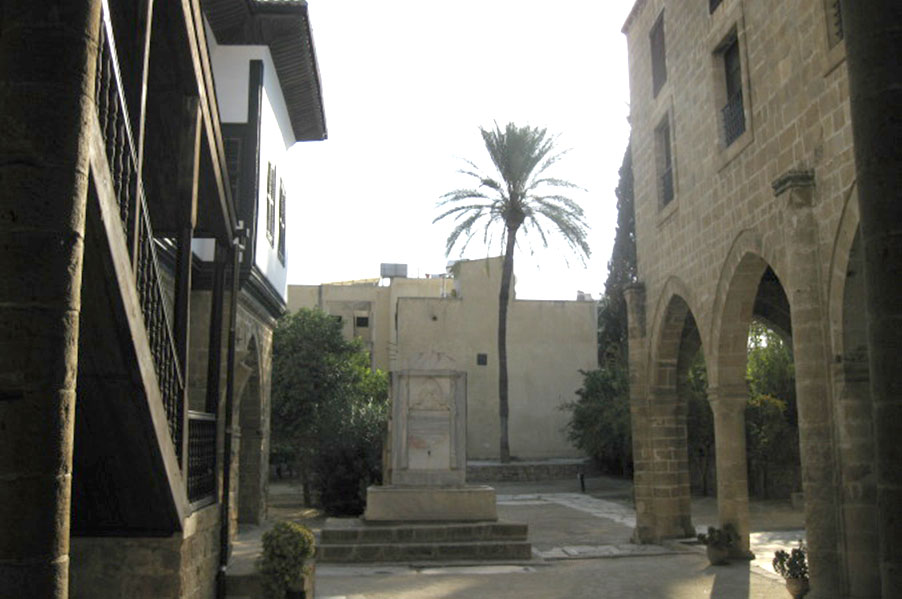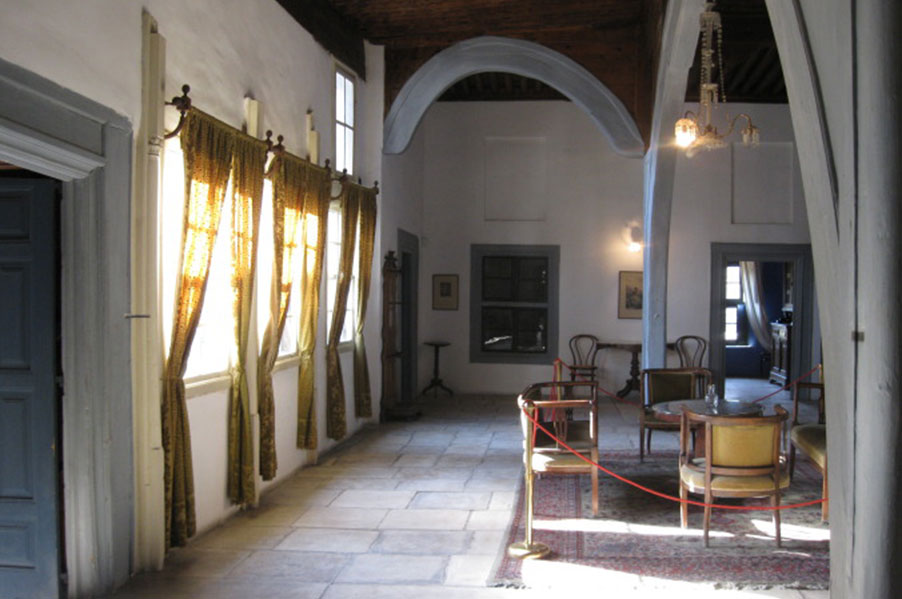- Home
- Nicosia
- Nicosia Entries
- Ethnological Museum Hadjigeorgakis
Description
Hours:
Monday: Closed
Tuesday: 8:30am - 15:30pm
Wednesday: 8:30am - 15:30pm
Thursday: 8:30am - 15:30pm
Friday: 8:30am - 15:30pm
Saturday: 9:30am - 15:30pm
Sunday: Closed
Entrance Fee: €2,50
Information
The House of Hadjigeorgakis Kornesios is the most important example of urban architecture of the last century of Ottoman domination that survives in old Lefkosia. It is situated near the Archbishopric, in the neighbourhood of Saint Antonios, where the wealthy notables of the Greek community traditionally used to live.
Hadjigeorgakis Kornesios was a dragoman, the official interpreter for the Divan (Council) of the Sultan for thirty years from 1779. This title, which was one of the most prestigious titles given to the local Christians by the Ottoman authorities, gave the opportunity to Kornesios to accumulate huge wealth and power. His power brought jealousy to his enemies, who cunningly managed to have him beheaded on 31 March 1809 in Istanbul.
The house was built in 1793 with local bloc-cut sandstone and is a two-storey building. The monogram of the owner and the date of its erection can be seen on a marble tablet inside the entrance. The architectural plan of the building in the form of a Greek Δ surrounds a central garden with a fountain and a private bathhouse (hammam) which is comprised of three rooms. On the ground floor the servants’ quarters and the kitchen were situated. Roofed wooden stairs with a stone base lead to the entrance hall on the first floor from the courtyard. The official reception room and the living areas communicated with this reception hall. The official reception room (the onda), at the end of the east wing, differs from the other rooms with its exceptional carved wooden, gilded and painted decoration, which liken it to other official reception rooms in many mansions of the Ottoman Empire.
The furnishing of the house is not the original but belongs to the end of the 19th to early 20th century and was donated by the house's last owner. Today the mansion, which was awarded the Europa Nostra prize for its exemplary renovation work, functions as a museum.
